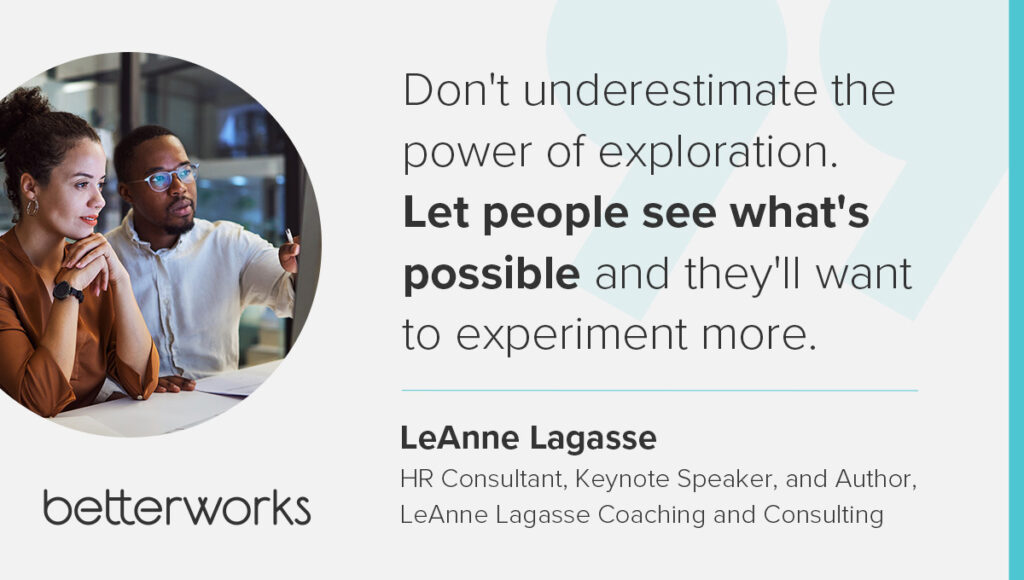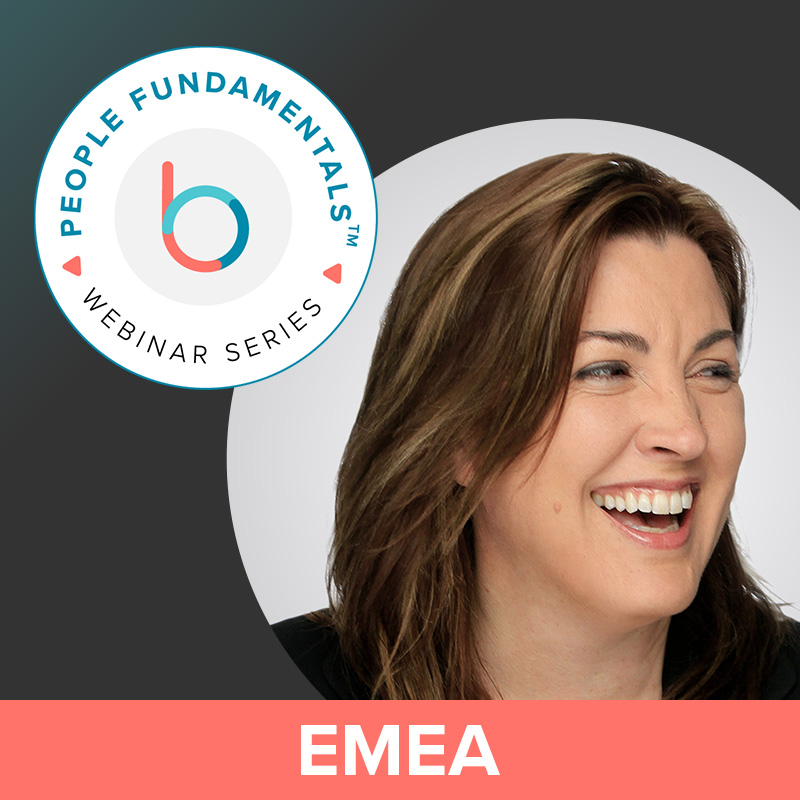For years, HR managed change as it arrived. Strategy came from the top and you adapted on the fly. That playbook no longer works.
AI moves faster than most organizations can respond. Right now, only 31% of U.S. employees are engaged at work, and most of that engagement depends on their manager relationship. Your workforce craves feedback and clarity, but annual reviews deliver answers too late.In the upcoming People Fundamentals webinar, The New HR Mandate: Leading People and Performance in the Age of AI, leadership communication expert LeAnne Lagasse joins Betterworks to reveal how senior HR leaders can step into transformation with confidence and humanity intact.
HR must design resilience
LeAnne calls this moment the new HR mandate: moving from reactive change management to transformation design. “HR sits at the intersection of technology, trust, and culture,” she says. “Our responsibility is to shape not only how AI gets implemented, but how it’s understood, communicated, and experienced by people.”
You’re the translator between human capability and technological possibility. If you focus only on efficiency gains, you lose the engagement that makes transformation stick.
Organizations getting this right reverse-engineer from human outcomes. Take talent acquisition. You could automate offer letter templates to save time. Or you could design templates that feel personalized, that make candidates feel pursued, and then automate the process. Same tool, entirely different outcome.LeAnne points to continuous listening as another example. “AI is helping shape our rhythms related to feedback and listening in organizations,” she says. “The outcome is our people feel more heard.” Right now, only about three in 10 U.S. employees believe their opinions count at work. Strategic use of technology can close that gap.

Show AI, don’t sell it
When employees hear “AI,” some get curious. Many get nervous. Headlines about displacement fuel the fear.
LeAnne recommends starting with perspective-taking. “Speak to the fact that this is both exciting and a little creepy sometimes,” she says. Give your people space to voice concerns before you roll out the roadmap.
Then shift from selling to showing.
LeAnne recently worked with an executive who was hesitant about AI until they pulled up ChatGPT together on a call and experimented live. The executive described a workflow bottleneck eating up hours each week. Within minutes, she watched ChatGPT offer to build an Excel spreadsheet to solve it. “I could see my client’s eyes just get bigger and bigger in an awe-inspiring way,” LeAnne recalls. “She leaned forward and said, ‘Oh my gosh, it can do that?'”
That demo erased weeks of skepticism. “Don’t underestimate the power of exploration and experimentation,” LeAnne says. “Instead of telling employees, ‘Here’s how we expect you to use AI,’ let’s get curious. Let’s put our researcher hat on.”
Enable continuous coaching
Performance management has often been relegated to ad-hoc conversations: annual reviews, twice-a-year check-ins, one employee survey per year. Engagement drivers tell a different story.
Employees need answers now:
- Do I have clear expectations in my role?
- Am I getting feedback that shows I’m contributing?
- Do I have the resources and development I need?
Those answers can’t wait 12 or even six months. “Employees crave regular rhythms, continuous rhythms of feedback and listening,” LeAnne says. “Continuous performance management where employees know: here’s what the expectations are, here’s how I’m performing and here’s how I’m going to grow.”
Technology enables that heartbeat. A nudged check-in pings inside Teams when an OKR drifts 10%. Recognition flows in Slack when someone closes a goal. Feedback arrives in the flow of work, not on a compliance calendar.
“If you use technology strategically, if you use communication strategically,” LeAnne says, “you’re going to drive engagement, you’re going to drive retention, and you’re going to get better outcomes as a whole.”

Close the perception gap
Here’s a hard truth: Executives see HR as strategic, but HR leaders don’t always see themselves that way. Neither do IT or finance.
LeAnne calls this a congruence problem. It’s the gap between how you think you show up and how others experience you. “Where there is a perception problem, there is a communication opportunity,” she says.
If you want a seat at the transformation table, communicate strategically about the value your function brings. Not just what you do, but how what you do advances business strategy. Speak the language of your cross-functional partners. Connect workforce outcomes to board-level goals.
“HR has to be the mirror,” LeAnne says, “to make sure people know what the outcomes will be if we’re doing this with AI.”
Organizations that cultivate a learning mindset handle transformation well. Their leaders say, “We’re on the front edge of this thing and we’re figuring it out together.” They narrate change openly. They create feedback loops about how employees experience transformation. And they meet people where they are — acknowledging that some arrive ready to experiment while others need patience and support.To hear more from LeAnne on how HR leaders can lead transformation with confidence in the age of AI, register for the November 12, 2025 webinar.
Don’t miss this session with LeAnne!




